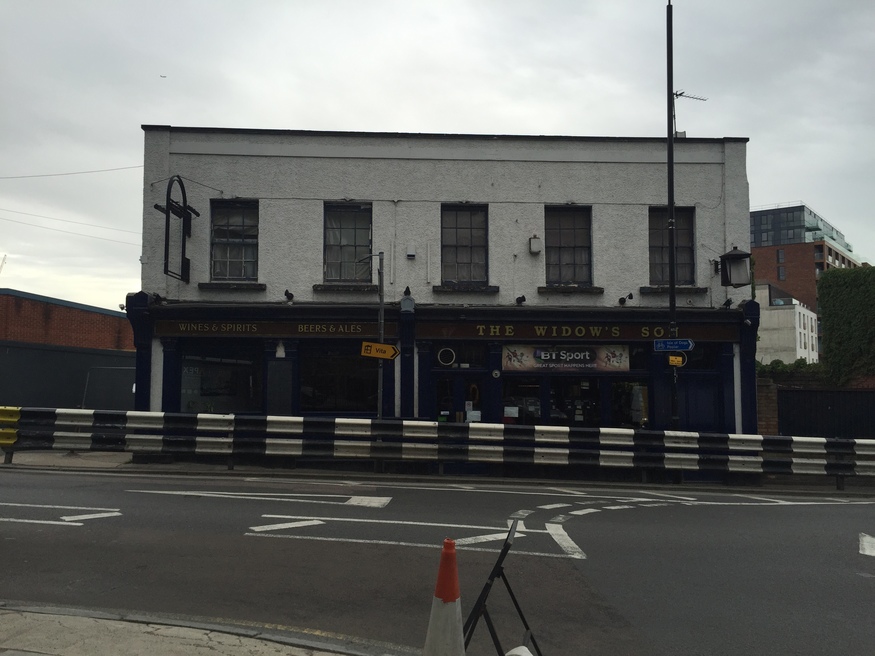
In 1967, food writer Adrian Bailey named his choice of the 12 best pubs in London for offbeat guidebook Len Deighton’s London Dossier. How many of his recommendations do you think are still in business nearly half a century later?
As it’s impossible to talk about pubs these days without lamenting their decline, you might be forgiven for thinking we’d be lucky if four or five had limped on into the 2010s, but the correct answer is both surprising and heartening. All but two are still welcoming drinkers today, and one of the lost pubs closed long before the cull of recent years.
Still very much open is the London Apprentice, mentioned briefly in the 2015 edition of The CAMRA Guide to Best Beer Pubs & Bars, as offering one of the better beer selections in Greene King’s Taylor Walker chain. The pub’s enduring appeal is obvious, with its enviable Thames-side location opposite Isleworth Ait in a pretty conservation area close to Syon House and the confluence of the Duke of Northumberland’s River.
The part-18th century building has been much reworked inside, though its low-beamed ceilings and plaque recalling an 1848 bellringing feat are still as ‘olde worlde’ as they undoubtedly were in 1967. But a word with the barman reveals part of the reason why even pubs like this struggle to project a distinct personality in the age of managed chains. “No one’s worked here for longer than a few months,” he reveals, “let alone 50 years.”

Upriver at Barnes on a footpath among a warren of once-modest Victorian cottages is the first casualty of Bailey’s list. The Beehive opened in the mid-19th century to serve labourers in the market gardens that once stood here. It was originally a rural alehouse, essentially a cottage with a public front parlour where the elderly landlady served beer fetched from the cellar. It later acquired a bar but maintained its simple atmosphere.
An allotment opposite is a last vestige of local horticulture, and a man working there recalled visiting this “old-style” pub just before it closed, “in 1971 or 1972”. Today it’s indistinguishable from neighbouring houses, except for a calligraphed card with its old name stuck in a window.
You can understand why the Beehive struggled, but the other closed pub was one of London’s most famous, and a prominent local landmark. Jack Straw's Castle, named after the 14th century Peasants’ Revolt leader who reputedly rallied his supporters on Hampstead Heath, stood at the top of Hampstead Hill overlooking Whitestone Pond since at least the early 18th century.
Bombed during the second world war, this huge pub was rebuilt in weatherboarded style, with suggestions of castle towers and battlements, by noted architect Raymond Erith in 1964, and scandalously closed and converted to luxury flats in 2002. The downstairs restaurant, a sop to opponents of the closure, is now a posh gym.
Another famous pub only just survives. Every Good Friday, a young Royal Navy sailor adds a further hot cross bun to a collection hung in a net over the bar of the Widow's Son, Bow. Unreliable legend has it the tradition was established by a widowed landlady in commemoration of a son lost at sea, but the name is actually a masonic reference.

The pub was sold to a developer in 2012: a subsequent planning application was rejected but with the lease ending next year its future is still uncertain. Besides decaying bread the interior retains some engraved glass though much was stripped by previous landlords and you can’t avoid the whiff of neglect in a blokey, though friendly, place dominated by a pool table, big screen sport and industrial keg beer.
“I think Bun Day keeps them going all year,” confides a regular. Yet it’s right next to Devons Road DLR station and, with new housing going up all around, it should be unforgivable if a pub with this pedigree is denied a new lease of life.
The remaining eight pubs are all in central London, and all are still flourishing. Bailey calls the Salisbury in St Martins Lane “a cathedral in the episcopate of theatreland” but only hints in purple prose that in 1967 this was one of London’s few gay-friendly pubs, a status it had held since at least Oscar Wilde’s day. It’s heavily featured in Victim (1961), the first British film to mention the word ‘homosexual’.
The gay clientele gradually defected to Soho in the 1990s and it’s now an unremarkable Taylor Walker pub — except for its other distinguishing feature, the magnificent architecture and interior design dating from an 1899 rebuild. It retains engraved mirrors, elaborate screens, marble and polished brass surfaces, textured ceilings, pilaster-framed entrances and candelabras in the shape of female figures that can only be described as camp.
By Des de Moor. Thanks to beer bloggers Boak and Bailey, boakandbailey.com for their assistance.



